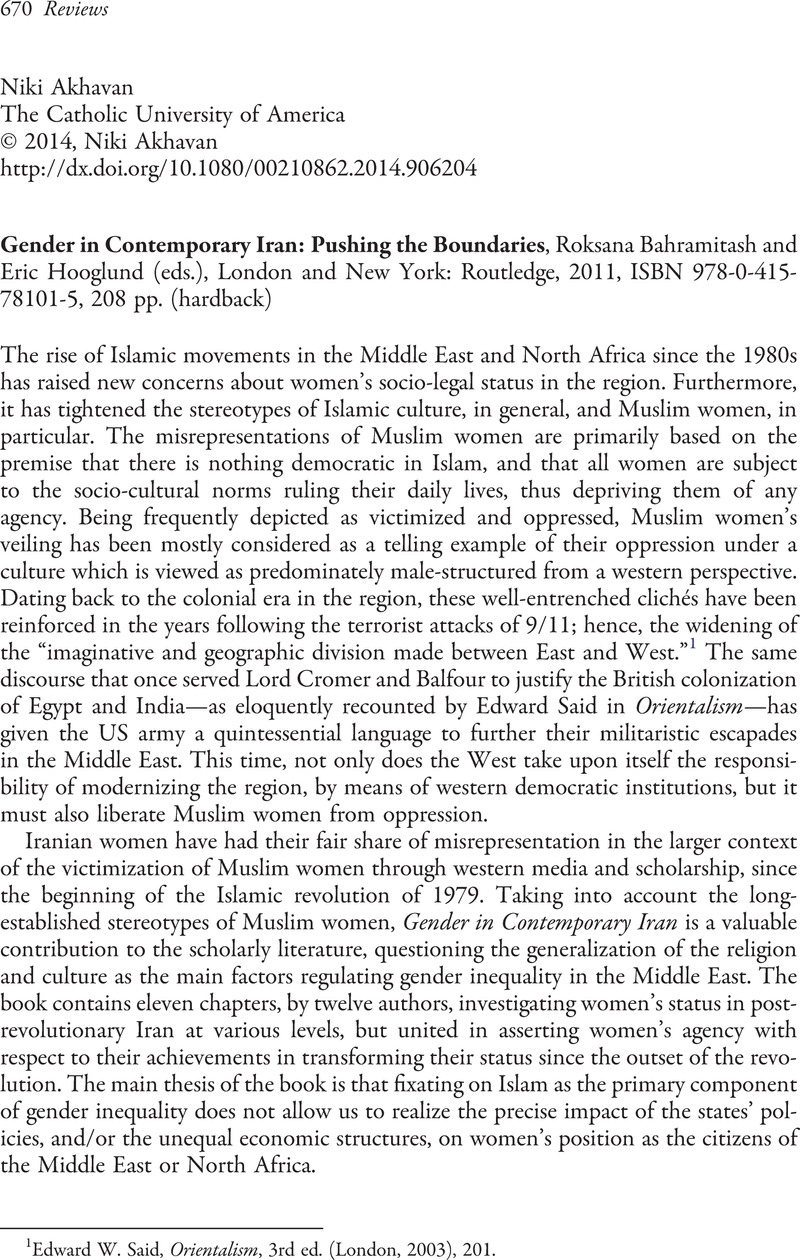No CrossRef data available.
Article contents
Gender in Contemporary Iran: Pushing the Boundaries, Roksana Bahramitash and Eric Hooglund (eds.), London and New York: Routledge, 2011, ISBN 978-0-415-78101-5, 208 pp. (hardback)
Published online by Cambridge University Press: 01 January 2022
Abstract

- Type
- Reviews
- Information
- Copyright
- Copyright © The International Society for Iranian Studies 2014
References
1 Said, Edward W., Orientalism, 3rd ed. (London, 2003), 201Google Scholar.
2 Kabeer, Naila, “Gender Equality and Women's Empowerment: A Critical Analysis of the Third Millennium Development Goal,” Gender and Development 13 (2005): 13–24CrossRefGoogle Scholar.
3 Kandiyoti, Deniz, “Bargaining with Patriarchy,” Gender and Society, Special Issue to Honor Jessie Bernard 2 (1988): 274–90CrossRefGoogle Scholar.
4 UNDP, The Arab Human Development Report 2005: Towards the Rise of Women in the Arab World (2006): 1–313, http://www.arab-hdr.org/publications/other/ahdr/ahdr2005e.pdf (accessed August 30, 2013).
5 Ibid.
6 Kabeer, Gender Equality and Women's Empowerment.
7 Ibid.
8 Khosrokhavar, Farhad, “L'Iran, la démocratie et la nouvelle citoyenneté,” Presses Universitaires de France, Cahiers internationaux de sociologie CXI (2001): 291–317CrossRefGoogle Scholar.




